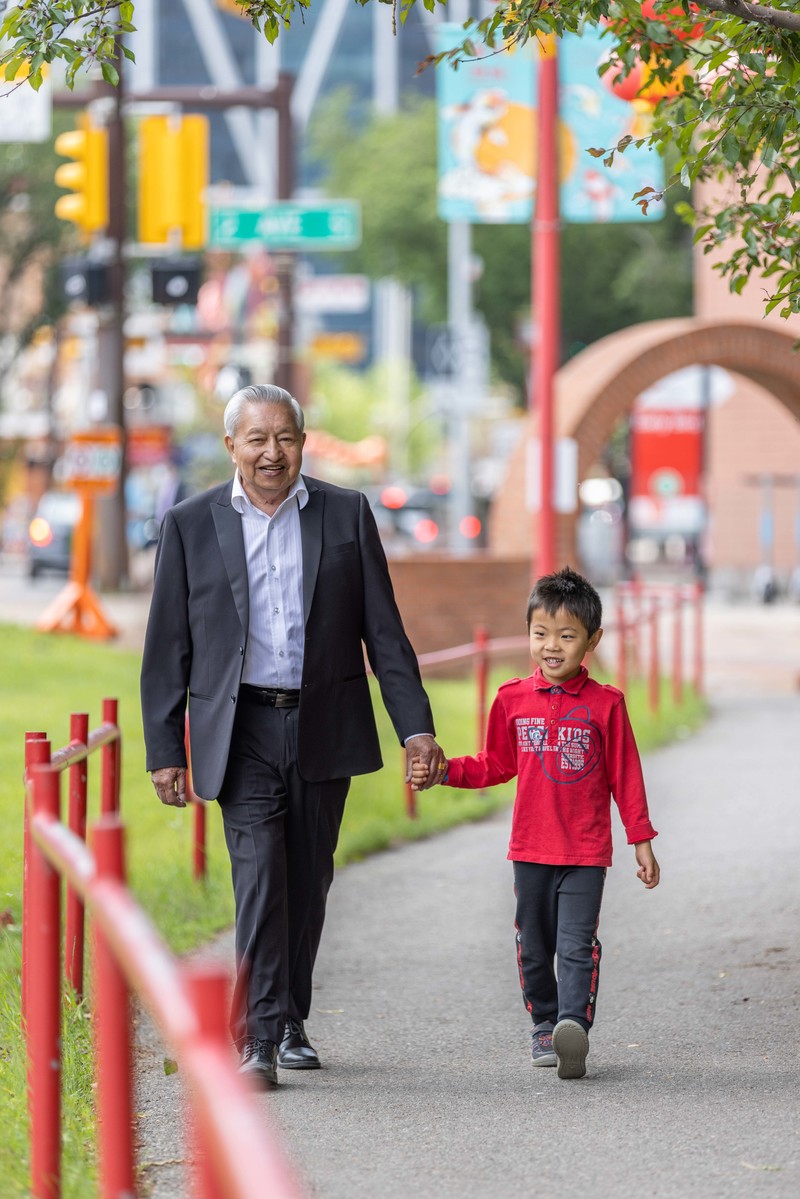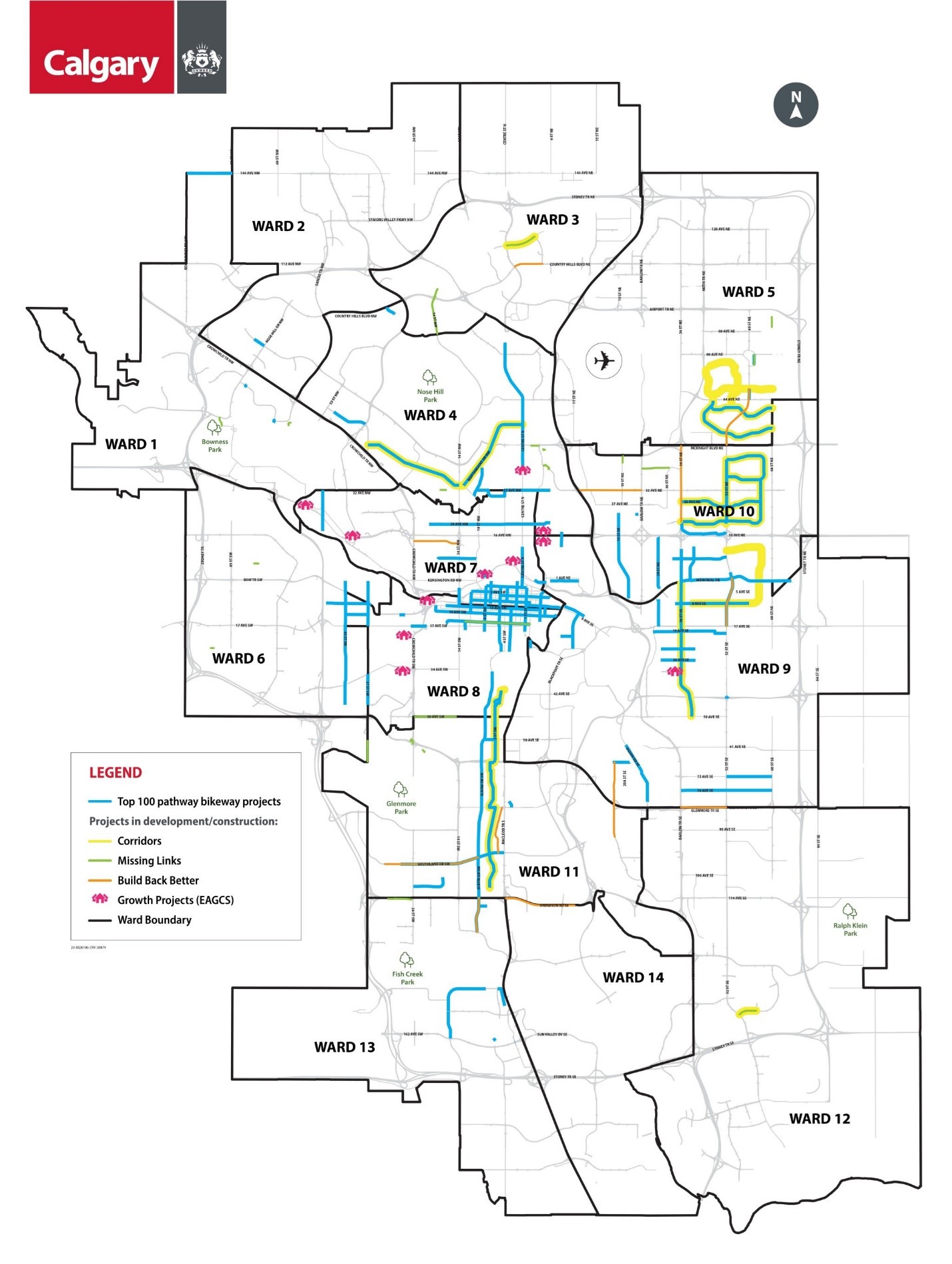Pathway and Bikeway Plan
What are we building?
We have several projects that are under construction or planned for construction in the near future. Please check here for current projects, plus you can check on any pathway closures or detours

Safer Crossings projects
We are enhancing safety with the installation of 28 Rectangular Rapid-Flashing Beacons (RRFBs). These enhance the safety of pedestrian crossings by alerting drivers that a person on foot is ready to cross with flashing lights that resemble emergency flashers on police vehicles. The lights continue to light up as you walk inside the crosswalk, alerting drivers the whole time the crossing is in use.
RRFB locations underway:
- 24 Avenue & 18 Street NW
- 5 Avenue & 23 Street NW
- 129 Avenue & Bonaventure Drive SE
- 130 Avenue & Wood Valley Gate SW
- Briddlecrest Drive & 24 Street SW
- Acadia Drive & Ancourt Road SE
- Braeside Drive & Braniff Road SW
- 5004 Maryvale Drive NE
- 16 Avenue & Robson Crescent SE
- 26 Avenue & 39 Street SE
- 38 Avenue & 20 Street SW
- Wentworth Drive & Wentworth Road SW
- Martha’s Way & Martindale Boulevard NE
- 44 Avenue & 4 Street NW
- Panamount Boulevard & Panamount Street NW
- Hidden Green/Hidden Park & Hidden Valley Drive NW
- Tuscany Drive & Tuscany Glen Road NW
- Cranston Drive & Cramond Dr / Cranfield Pa SE
What are we planning?
We have several projects in the planning stage. We are working with communities, groups and organizations who will be impacted by new or updated pathway and bikeway projects, to develop and confirm new designs and upgrades.
Check out our map of our Top 100 Pathway & Bikeway Network projects
Useful Links – Calgary's Pathway and Bikeway Network
- Pathways and trails
- Pathways, Bikeways and Walkways Digital Map
- Pathways and Bikeways – Walk and Roll Map
- Pathway closures and detours
- Wheeling lanes, cycle tracks and bike lanes
- Pathways snow clearning
- Pedestrians and Crosswalks
- Cycling education programs
- Cycling signs, road markings and traffic signals
Related links
Contact us
Questions about Calgary’s pathway and bikeway network?
What is 5A?

We design our pathway and bikeway network guided by five principles: Always Available for All Ages & Abilities. These principles are the result of consulting with Calgarians and outlined in our 5A Network Guiding Principles Report.
These 5As are applied to our planning and design by;
- Separating people by their speed
- Making it more easy to use
- Being accessible for everyone
- Making it reliable
- Improving visibility




